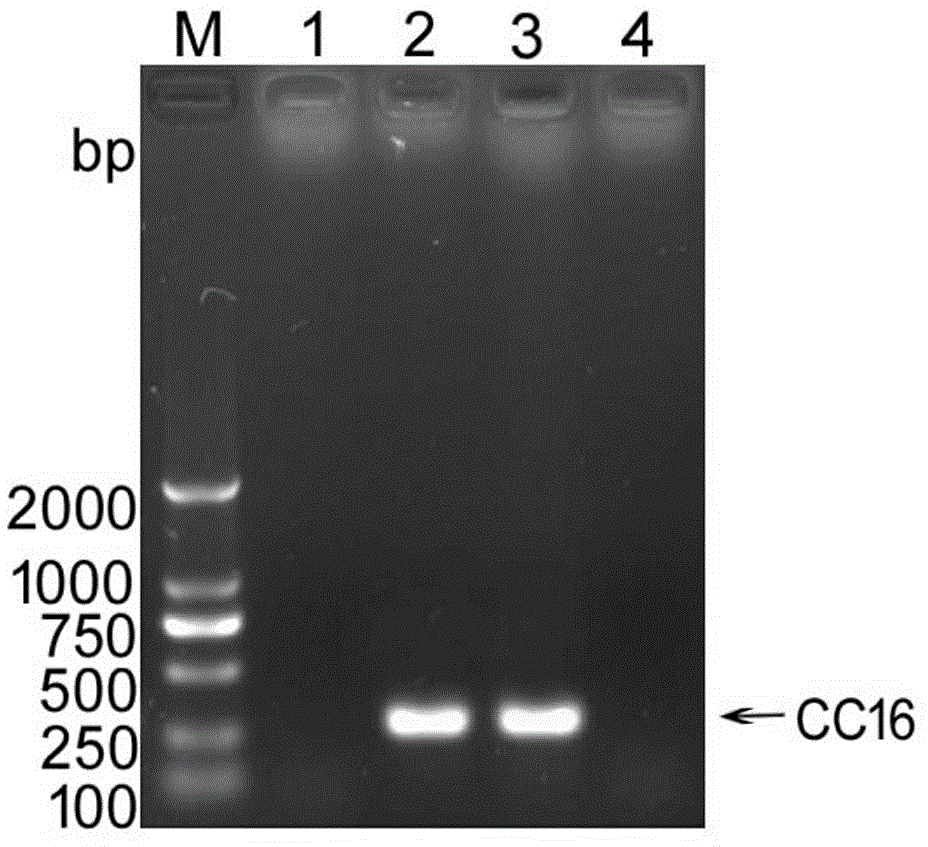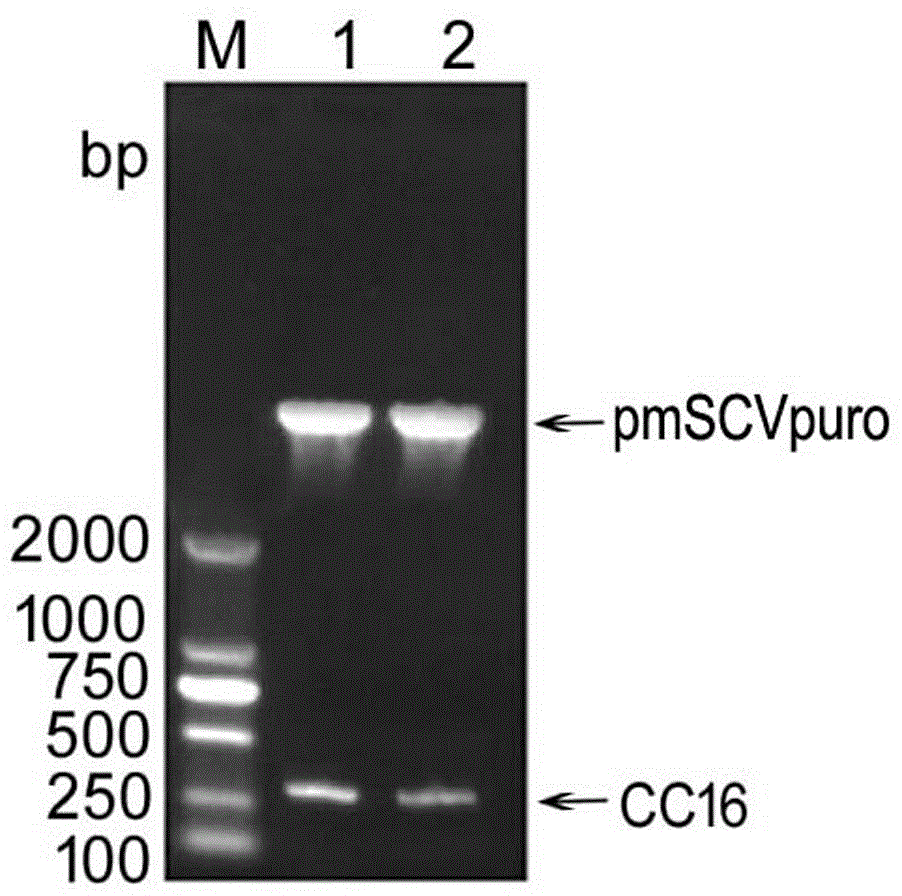Recombinant human CC16 gene, construction of eukaryotic expression vector of CC16 gene, and purification of recombinant protein
A eukaryotic expression vector, CC16 technology, applied in the field of genetic engineering, can solve the problems of decreased airway anti-inflammatory ability and inflammation deterioration
- Summary
- Abstract
- Description
- Claims
- Application Information
AI Technical Summary
Problems solved by technology
Method used
Image
Examples
Embodiment 1
[0042] Using the PAS (PCR-based Accurate Snthesis) method, according to the human CC16 protein coding gene (gene accession number: U01101.1), design the recombinant human CC16 gene sequence, synthesize the full-length splicing primers of the gene, and design protection at both ends of the primers Base, GCCACC (Kazak sequence) is added to the 5' end, and 3×Flag tag is added to the 3' end. The gene sequence was synthesized by Nanjing Zhongding Biotechnology Co., Ltd., and the synthesized hCC16 gene has the nucleotide sequence shown in SEQ NO.1.
[0043] Combine pMSCVpuro vector and hCC16 gene sequence with restriction endonuclease xho I and EcoR I double enzyme digestion, agarose gel electrophoresis to separate the digested product. After the digested product was recovered by the gel recovery kit, the digested carrier and digested hCC16 were mixed at a molar ratio of 1:3, and 4 Under the action of DNA ligase, react at 22°C for 1h. Then, the ligated products were transfor...
Embodiment 2
[0047] HEK 293T cells were cultured in DMEM high glucose medium (10% newborn bovine serum, penicillin 100u / ml, streptomycin 100ug / ml) at 37°C and 5% CO 2 Under the conditions of growth, the medium was changed every 3 to 4 days.
[0048] Use a 6cm culture dish for cell transfection. When the cells grow to 80-90% confluent, operate according to the instructions of the transfection reagent, transfect 2 μg of pMSCVpuro-hCC16 plasmid, and transfect the same amount of empty plasmid pMSCVpuro as a control; 48 hours later Cells were collected, protein was extracted with RIPA lysate, and the expression of hCC16 was identified by Western blotting. That is, after the protein extract was quantified by the BCA method, 20 μg of the total protein was taken for 12% SDS-PAGE separation, and then the protein on the gel was transferred to the membrane, blocked and other procedures, respectively, with rabbit anti-human CC16 antibody (1:1000 ), human anti-Flag monoclonal antibody (1:1000) as prim...
Embodiment 3
[0051] Collect the above serum-free medium. The remaining cells were washed with PBS to obtain cells stably transfected with pMSCVpuro-hCC16, and 1.5 ml of protein lysate (50 mM Tris-HCl, pH 7.4; 150 mM NaCl; 1 mM EDTA; 1% TRITON X-100) was added, incubated for 30 min, and used The cell lysate was collected by scraping the cells, centrifuged at 12000 g for 10 min, and the supernatant was collected and placed on ice. At 4°C, add the collected serum-free medium and cell lysate to ANTI-FLAG M pre-balanced with TBS (50mM Tris HCl, 150mM NaCl, pH7.4) 2 For affinity gels, incubate the protein with the gel overnight. The next day, wash off unbound protein with 20 column volumes of TBS. Add 6ml of 0.1M glycine-HCl, pH 3.5, to elute the bound target protein. Add 600 μl of 0.5M Tris HCl, pH7.4; 1.5M NaCl to the eluate, use a concentration tube with a molecular weight cutoff of 3kDa to concentrate the target protein, and adjust the protein concentration to 1 μg / μl. The obtained prote...
PUM
 Login to View More
Login to View More Abstract
Description
Claims
Application Information
 Login to View More
Login to View More - R&D
- Intellectual Property
- Life Sciences
- Materials
- Tech Scout
- Unparalleled Data Quality
- Higher Quality Content
- 60% Fewer Hallucinations
Browse by: Latest US Patents, China's latest patents, Technical Efficacy Thesaurus, Application Domain, Technology Topic, Popular Technical Reports.
© 2025 PatSnap. All rights reserved.Legal|Privacy policy|Modern Slavery Act Transparency Statement|Sitemap|About US| Contact US: help@patsnap.com



